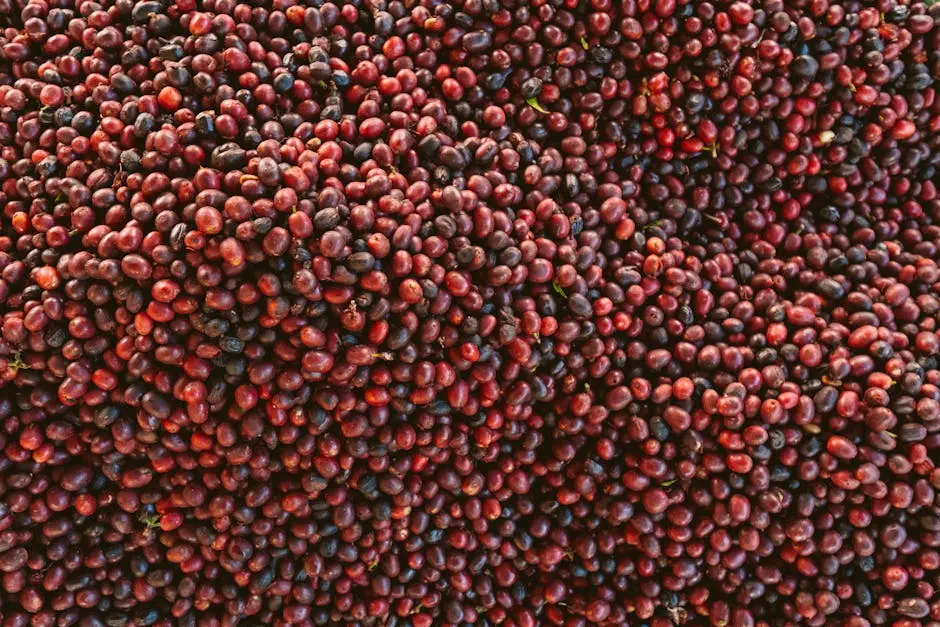African coffee beans are renowned for their unique and diverse flavor profiles, which can be influenced by the region they are grown in as well as their processing methods. Understanding how these beans taste can help coffee enthusiasts appreciate their complexity and richness. In this post, we’ll explore the different flavor characteristics of African coffee beans and what makes them stand out in the coffee world.
Overview of African Coffee Bean Regions
Africa is home to some of the world’s most famous coffee-growing regions. The rich soil, combined with ideal climate conditions, creates an environment where coffee beans thrive. Locations such as Ethiopia, Kenya, and Rwanda are not just known for their production but also for the unique flavor profiles that their beans develop.
Ethiopia, often referred to as the birthplace of coffee, produces beans that reflect its diverse landscape. From the high-altitude regions to lush, tropical areas, the flavors range dramatically. This variety contributes to the vibrant taste experiences that Ethiopian coffees offer.
On the other hand, Kenya is famed for its bright acidity and full-bodied flavors. Kenyan coffee often has berry and citrus notes, making it an exciting choice for those who enjoy a lively cup. The care taken during the processing further enhances these distinct flavors.
Rwanda, another key coffee-producing country, has been gaining fame for its smooth and balanced brews. With its approach to sustainable farming and emphasis on quality, Rwandan coffee tends to carry rich chocolate flavors, making it a delightful and comforting choice.
Flavor Profiles: Ethiopian Coffee Beans
Ethiopian coffee beans are celebrated for their complexity and depth. These beans often exhibit floral aromas, combined with fruity highlights that can be reminiscent of berries or citrus. Depending on the region, you might detect hints of jasmine or bergamot, further enriching the overall experience.
One of the most popular varieties, Yirgacheffe, is known for its bright acidity and tea-like qualities. When brewed, it offers a burst of flavor that keeps evolving, revealing layers of taste that make each sip unique. Many coffee lovers describe the experience as drinking a beautiful cup of liquid art.
In contrast, Sidamo beans tend to yield a more earthy flavor profile, often complemented by notes of cocoa and spice. This rich flavor makes Sidamo a great choice for espresso and can provide a delightful contrast when combined with milder coffees.
Flavor Profiles: Kenyan Coffee Beans
When it comes to Kenyan coffee, the first thing many people notice is its striking acidity. This characteristic adds a lively brightness to the coffee, which many find refreshing. The fruitiness often veers towards berry flavors - think blackcurrant or raspberry - making it a favorite for those who enjoy vibrant, fruity coffees.
Kenyan coffee is often processed using the wet method. This technique enhances the bright acidity and accentuates the rich flavors. The result is a cup that is not only invigorating but also has an undeniable depth, leaving a lasting impression.
Combining this brightness with its strong body often leads to a harmonious experience, cherished by coffee connoisseurs. It’s no surprise that Kenyan coffee has become a staple in many specialty coffee shops worldwide.
Flavor Profiles: Rwandan Coffee Beans
Rwandan coffee beans are gaining recognition for their smooth drinking experience. These coffees often possess a comforting sweetness with a delicate acidity that rounds off the flavor. The profiles usually include notes of chocolate, caramel, and sometimes even subtle hints of fruity undertones.
The consistency and quality of Rwanda’s coffee have significantly improved over the years, thanks to the focus on sustainable practices. This attention to detail during the growing and processing phases results in beans that are both flavorful and environmentally friendly.
As a growing hub for coffee enthusiasts, Rwandan coffee offers a gentle introduction for those new to African coffees while still providing enough complexity to satisfy seasoned drinkers. Its comforting flavors make it an ideal choice for those cozy mornings.
Factors Influencing Taste in African Coffee
The taste of African coffee beans is influenced by a multitude of factors, starting with the altitude at which they are grown. Higher elevations often lead to slower bean development, resulting in a denser coffee with richer flavors.
Furthermore, the processing methods employed play a crucial role in defining the final taste. The wet method, where the beans are fermented, produces brighter and cleaner flavors, while the dry method might yield more fruity and earthy profiles. Each technique imparts its unique characteristics to the beans.
Lastly, the climate of the region can dramatically alter flavor. Variations in rainfall, temperature, and sunlight all contribute to the individual traits of each coffee bean. Understanding these factors can open up a world of flavor exploration for any coffee drinker.
Final Thoughts on African Coffee Beans
In summary, African coffee beans offer a wide range of flavors and aromas that can captivate any coffee lover. From the fruity and floral notes of Ethiopian coffees to the rich and full-bodied profiles of Kenyan beans, the diversity of African coffees is truly remarkable. Experimenting with different brews can unveil the distinct characteristics of each region. So, the next time you enjoy a cup of African coffee, take a moment to savor its unique taste.


